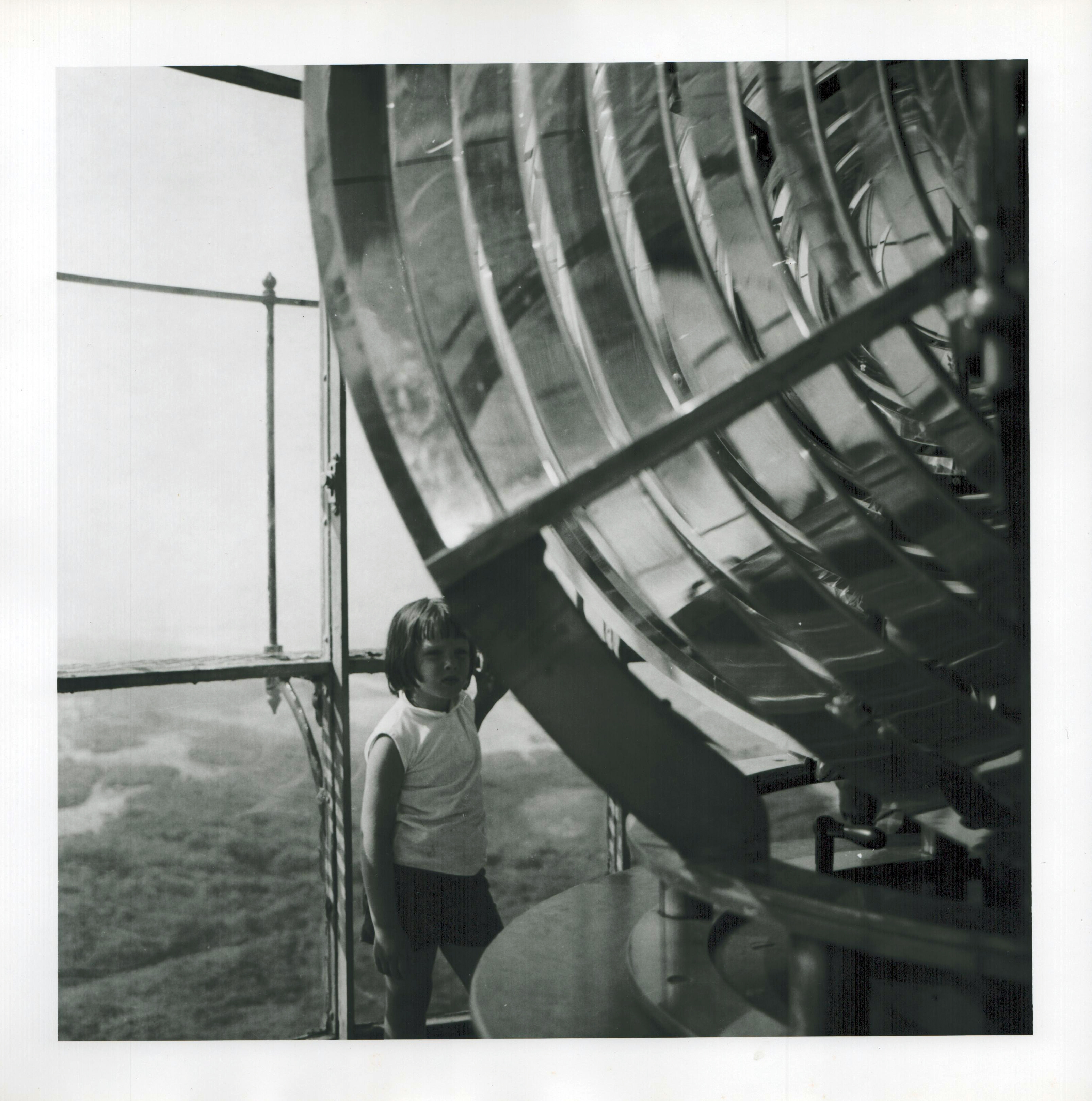
Since 1796, the Montauk Point Lighthouse has served as a navigational aid to mariners, casting light from the land’s end and acting as a signal for the rocky shoreline. In its early years of operation, a lighthouse keeper attended to the whale oil-fueled lanterns, carrying eight lanterns up the interior spiral staircase and lighting the wicks daily.
The use of lenses in lighthouses started in England in the 18th century, enhancing illumination created by burned wood, coal, candles, or whale oil-fueled lanterns. Early lenses were thick, heavy, and ineffective in carrying light across the sea. Many lighthouses in the United States adopted the use of lenses by 1810. In 1822, Augustin Fresnel (pronounced “Frey Nel”) designed a lens with bull’s eye-shaped panels that refracted light horizontally and vertically, resulting in a concentrated light beam.
“One of the greatest of human inventions is the Fresnel lens, now used in all lighthouses, which condenses the light by an arrangement of compound refractors so as to throw all the rays in a single sheet…” — boasts an article in the June 17, 1892 issue of The East Hampton Star — “By its means a first-order light, naturally of 450 candle-power, obtains a power of 12,000 candles.”

The first Fresnel lens was installed at the Montauk Point Lighthouse in 1860. It stood 12 feet high and weighed more than 10,000 pounds. The top of the lighthouse had to be extended an additional 30 feet to accommodate it. In 1903, the lens was replaced with a bivalve Fresnel lens that produced a white flash every 15 seconds. It remained in operation until 1987 and was then dismantled. It was placed on display in the visitor center museum when the Montauk Historical Society took over the lighthouse and opened its doors to the public for the first time.
The lens that shone from 1903 to 1987 has since been returned to the top of the tower at the Montauk Point Lighthouse through a pilot program with the United States Coast Guard and the Montauk Historical Society. A small celebration on November 6, 2023, inaugurated the reinstallation of the lens. As part of the restoration, the Fresnel lens was retrofitted with a high-output L.E.D. light source that produces up to 1,000,000 lumens. The glass at the top of the tower was treated with UV protective film to help mitigate the deterioration of the lens components and with a newly equipped environmental monitoring system.
To determine the feasibility of the lens, over the next two years, the historical society will collect data for the Coast Guard including environmental conditions and required maintenance. It is one of 50 Fresnel lenses now in service at lighthouses overseen by the Coast Guard across the United States.

Reply or Comment